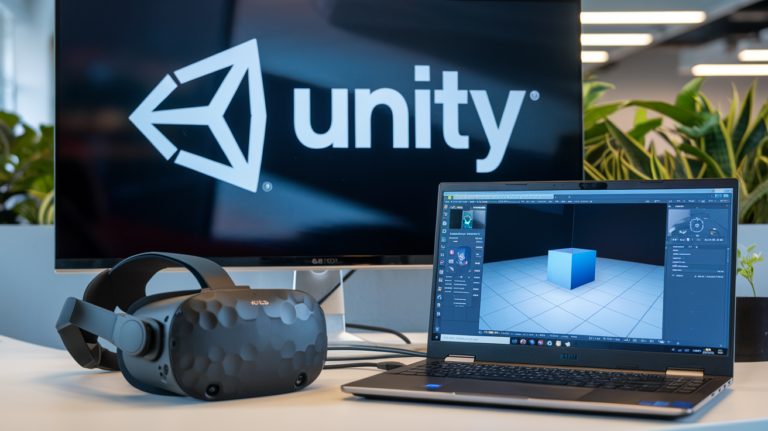Virtual reality (VR) has transformed the gaming landscape, with Unity being a crucial platform for developers. However, many users face a common issue: the Unity 2022.3 Oculus Link constant hourglass on Windows 11. This article delves into the causes and solutions for this problem, ensuring you can enjoy a smooth VR experience.
Understanding Oculus Link
Oculus Link is a feature that allows users to connect their Oculus Quest or Quest 2 headsets to a gaming PC. This connection enables access to high-quality VR games and applications developed in Unity. While Oculus Link enhances the overall VR experience, issues like the constant hourglass cursor can hinder gameplay and development.
Key Features of Oculus Link
| Feature | Description |
|---|---|
| High-Quality Graphics | Provides access to PC VR games with superior visuals. |
| Seamless Integration | Easily test and play Unity projects on your headset. |
| Expanded Library | Access a vast range of games and applications available on the Oculus platform. |
Causes of the Hourglass Cursor Issue
When using Unity with Oculus Link, encountering a constant hourglass icon can stem from several factors:
1. Software Compatibility
Compatibility issues arise when either Unity or Windows 11 is not updated. Using the latest versions of both is crucial for optimal performance.
2. Driver Problems
Outdated graphics drivers can significantly impact the performance of Unity and Oculus Link. Keeping these drivers updated is essential.
3. Oculus Software Configuration
Incorrect settings in the Oculus software can conflict with Unity applications, leading to the persistent hourglass cursor.
4. Unity Project Settings
Certain configurations within the Unity editor may not be optimized for VR, which can cause runtime issues.
5. System Resource Limitations
Running multiple resource-intensive applications simultaneously can overwhelm your system, resulting in performance degradation.
Troubleshooting the Hourglass Cursor Issue
To resolve the Unity 2022.3 Oculus Link constant hourglass issue, follow these troubleshooting steps:
1. Update Software
Ensure all relevant software is up to date:
- Unity: Open Unity Hub and check for any available updates.
- Oculus App: In the Oculus app, go to Settings > General to check for updates.
- Windows 11: Navigate to Settings > Update & Security > Windows Update to confirm you have the latest updates installed.
2. Update Graphics Drivers
To update your graphics drivers:
- For NVIDIA Users: Open the NVIDIA GeForce Experience app and check the Drivers tab for updates.
- For AMD Users: Use the AMD Radeon Software to install the latest drivers.
3. Adjust Oculus Software Settings
Make sure your Oculus software is properly configured:
- Open the Oculus app on your PC.
- Go to Devices and ensure your headset is connected.
- Check for any notifications or prompts that indicate issues with the connection.
4. Optimize Unity Editor Settings
To enhance performance in Unity:
- Open your Unity project.
- Navigate to Edit > Project Settings > Player.
- Ensure the correct VR SDK is selected for your project.
- Under XR Plugin Management, verify that the Oculus option is enabled.
5. Close Unnecessary Applications
Free up system resources by closing applications that are not in use. This can help improve overall performance and reduce the occurrence of the hourglass cursor.
6. Restart Your Computer
Sometimes, a simple restart can resolve temporary issues caused by software glitches or system overload.
Summary of Solutions
| Solution | Description |
|---|---|
| Update Software | Keep Unity, Oculus, and Windows 11 updated. |
| Update Graphics Drivers | Ensure graphics drivers are current for optimal performance. |
| Adjust Oculus Settings | Configure Oculus software settings correctly. |
| Optimize Unity Settings | Ensure VR SDK is selected and configured in Unity. |
| Close Unnecessary Applications | Free up system resources before launching Unity projects. |
| Restart Your Computer | Restart to clear temporary issues affecting performance. |
Related Article: Sonim Update via ADB and Fastboot
Conclusion
The Unity 2022.3 Oculus Link constant hourglass issue on Windows 11 can disrupt the VR experience, but understanding its causes and applying the troubleshooting steps outlined in this article can help you regain control. By keeping your software up to date, optimizing settings, and managing system resources effectively, you can enjoy a seamless integration between Unity and Oculus Link, allowing for a smooth and immersive VR experience.
FAQs
FAQ 1: What is the Unity 2022.3 Oculus Link Constant Hourglass issue?
The Unity 2022.3 Oculus Link constant hourglass issue refers to a situation where users encounter a persistent hourglass cursor while trying to run Unity projects through Oculus Link on Windows 11. This problem can hinder the VR experience, making it difficult to access or test applications.
FAQ 2: What are the common causes of the Unity 2022.3 Oculus Link Constant Hourglass issue?
Common causes include software compatibility issues between Unity and Windows 11, outdated graphics drivers, incorrect Oculus software settings, unoptimized Unity project settings, and limitations in system resources when multiple applications are running.
FAQ 3: How can I resolve the Unity 2022.3 Oculus Link Constant Hourglass issue?
To resolve this issue, ensure that your software is up to date, including Unity, Oculus, and Windows 11. Update your graphics drivers, adjust the settings in the Oculus software, optimize Unity project settings, close unnecessary applications, and restart your computer to clear any temporary glitches.
FAQ 4: Does the Unity 2022.3 Oculus Link Constant Hourglass issue affect all users?
While many users experience the Unity 2022.3 Oculus Link constant hourglass issue, it does not affect everyone. The frequency of this problem can depend on specific hardware configurations, software versions, and individual system settings.
FAQ 5: Is there a way to prevent the Unity 2022.3 Oculus Link Constant Hourglass issue from occurring in the future?
To prevent the Unity 2022.3 Oculus Link constant hourglass issue, regularly update your software, including Unity, Oculus, and graphics drivers. Ensure optimal system performance by closing unnecessary applications and keeping your system resources managed efficiently. Additionally, configure the Oculus and Unity settings correctly to support VR development.
